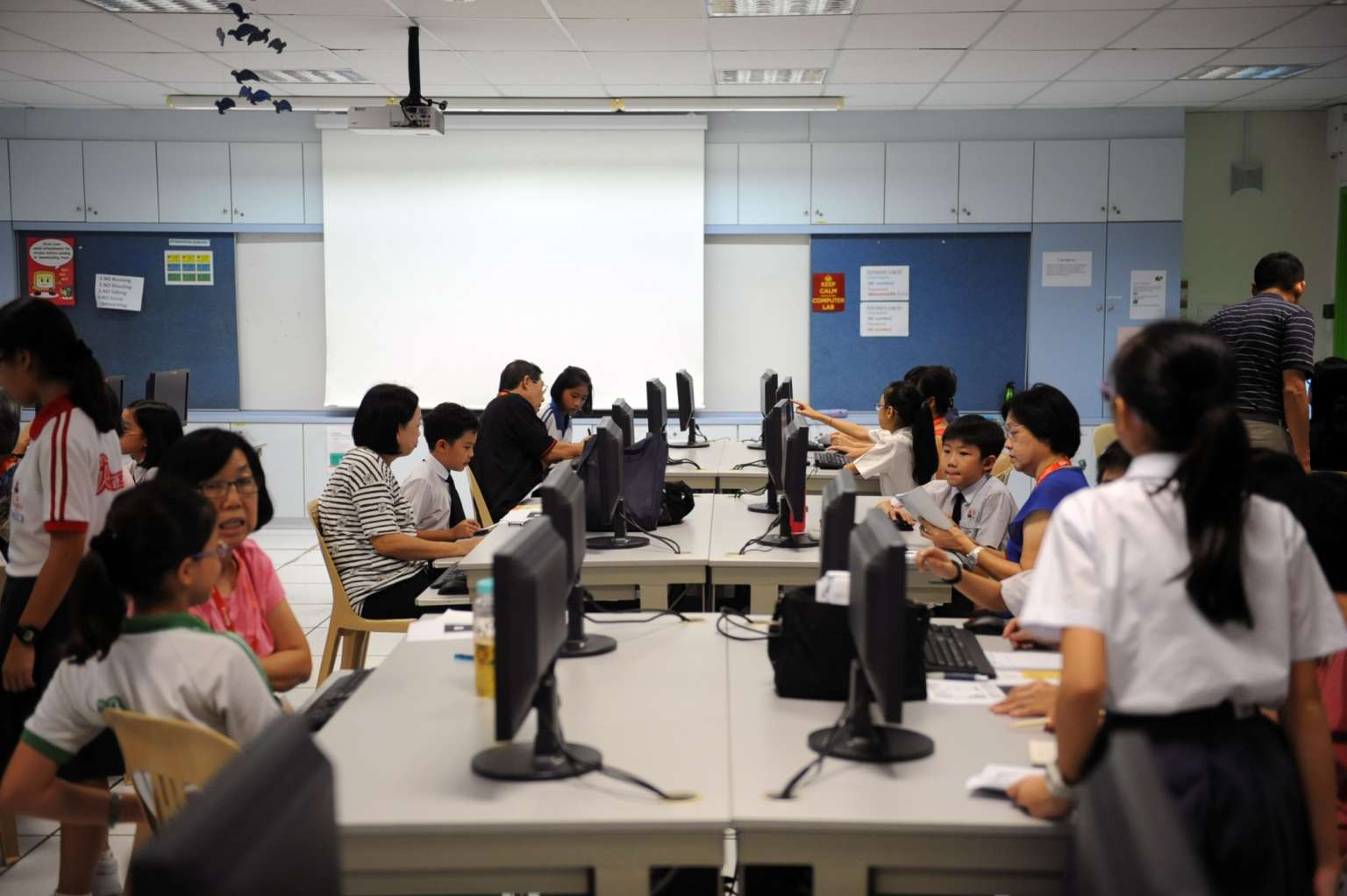Singapore students bag education 'World Cup'
They come out tops among 72 economies for their showing in maths, science and reading
Sign up now: Get ST's newsletters delivered to your inbox

Some seniors taking a free basic computer skills course at Chongfu school under the Council for Third Age's Intergenerational Learning Programme.
PHOTO: ST FILE
Follow topic:
One week after scoring top marks in a mathematics and science study, Singapore students aced an even more prestigious international benchmarking test, which is dubbed the "World Cup for Education".
The Republic's 15-year-olds were ranked No. 1 for mathematics, science and reading in the Programme for International Student Assessment (Pisa), a triennial study run by the Organisation for Economic Cooperation and Development (OECD) to measure how well students use their knowledge and skills to solve real-world problems.
In the last Pisa test in 2012, Singapore's students were ranked second in mathematics and third in science and reading.
Pisa 2015 conducted last year saw teens from 72 countries and economies participating. In Singapore, 5,825 students, from all 168 public schools sat for the computer-based test, alongside 290 students from nine private schools, including a madrasah. The students were randomly selected and also had to fill in a questionnaire on their learning habits.
The Ministry of Education (MOE) said yesterday that the results show Singapore students are not just competent in applying knowledge and skills, but also in analysing and communicating as they solve novel problems.
It added that the deliberate curricular shifts made by MOE over the years to trim syllabuses and give more time to higher-order thinking skills have borne fruit.
Minister for Education (Schools) Ng Chee Meng, in a Facebook post, yesterday congratulated Singapore students on their top placing in Pisa as well as the Trends in International Mathematics and Science Study released last week. They are equipped with some of the skills needed for the future, he said.
"Heartened too that our teachers' dedication to plan engaging lessons has built a strong foundation for our students," he added.
Deputy director-general of education (schools) Low Khah Gek also noted the finding that more than eight in 10 students here agreed that they have fun when learning science.
Mr Andreas Schleicher, director for education and skills at OECD, said: "The modern world no longer rewards people for what they know... but for what they can do with what they know. It is therefore encouraging that Singapore students are not just leading the world in scientific knowledge, but they excel particularly in their capacity to think like scientists."
MOE noted that the Pisa 2015 results also show relatively few low performers and a high proportion of top performers.
Singapore's proportion of low performers in each of the three domains stands at about 10 per cent - among the lowest of all participating education systems. Meanwhile, Singapore's proportion of top performers is the highest among all economies - 24 per cent for science, 18 per cent for reading and 35 per cent for mathematics.
Former Hougang Secondary student Melissa Yong, 17, who is now in Serangoon Junior College, said her teachers used card tricks and even a Changi Airport field trip to make the subject interesting. "At the airport, we had to use maths to exchange different currencies. At the taxi stand, we had to figure out how many people could be accommodated." She went on to score distinctions in both her mathematics and additional mathematics papers.

